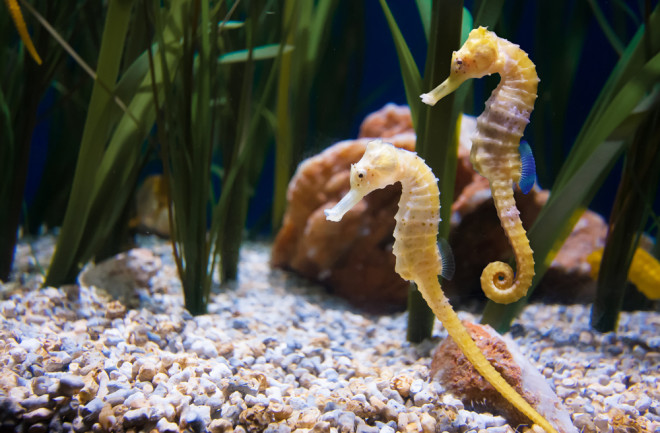Across the animal kingdom, it’s usually females — the sex that produces the eggs — that gets pregnant or plays the biggest role in caring for those eggs after they are fertilized. Why this is true is still an evolutionary mystery, one that the researchers in Camilla Whittington’s lab at the University of Sydney, Australia, think about a lot. One of the ways they investigate this mystery is by focusing on the exception to that rule: the seahorse, the only vertebrate (animal with a backbone) where the males get pregnant.
To be sure, nature is filled with males that hold fertilized eggs in their mouths, such as Darwin’s frogs and cardinalfish, as well as males that stick eggs to their bodies, such as waterbugs, or that tuck young into pockets, such as the hip pocket frog.
But seahorse dads take this care to the next level, making sure that the eggs in their pouches get enough oxygen and don’t smother in waste. They have contractions when giving birth. Whittington’s own genetics research showed that seahorse dads have the right genes to produce nutrition for the eggs, but that didn’t prove that they did.
If seahorse dads supply nutrition to the eggs, then what comes out of their pouches (the newborn seahorses) would weigh more than the newly fertilized eggs. Whittington’s student, Zoe Skalkos, took on that research as an undergraduate honors project.

